

It is important to provide road users with early warning information about disasters. Adequate early warning information can increase public awareness of disasters and prevent loss of life and reduce the economic and material impact of disasters through proactive disaster preparedness and post-disaster recovery efforts. For early warning systems to be effective, they must actively engage communities at risk, promote public education and awareness of risks, effectively spread messages and warnings, and ensure that they are always ready. Particularly in recent years, as disasters due to extreme weather events tend to be more severe and widespread, efforts are being made to develop early warning information as a means of maximizing the use of existing road infrastructure to reduce disasters, in addition to organizing disaster-resistant road infrastructure.
Early warning information provision currently includes those for floods, earthquakes, avalanches, tsunamis, tornadoes, landslides, and droughts. Some of the road authorities provide their own early warning systems for specific disasters listed above. The objectives of early warning information provision can be divided into two categories: damage deterrence and damage impact reduction 1.
The purpose of damage suppression is to minimize the occurrence of disasters by providing information on the possibility of disaster occurrence in advance and preparing for it. This includes rainfall information and typhoon forecasts. On the other hand, "damage impact reduction" is to prepare for the damage that has occurred in order to cope with the situation and reduce the impact of the disaster afterward. It corresponds to the damage prediction immediately after the earthquake. It is desirable to provide both types of early warning information, but it is necessary to consider providing information according to the situation in each country.
An early warning information system is "an integrated set of systems and processes for hazard monitoring, forecasting and prediction, disaster risk assessment, communication, and preparedness activities that enable individuals, communities, governments, and businesses to take timely action to reduce disaster risk in advance of a hazardous event” 2.
In 2003, experts taking part in the 2nd International Early Warning Conference 3 introduced the current concept of efficient or people-centered early warning systems based on four elements:
This concept is shown in Figure 3.4-1. 4
In this section, early warning information systems implemented in the road sector are introduced.
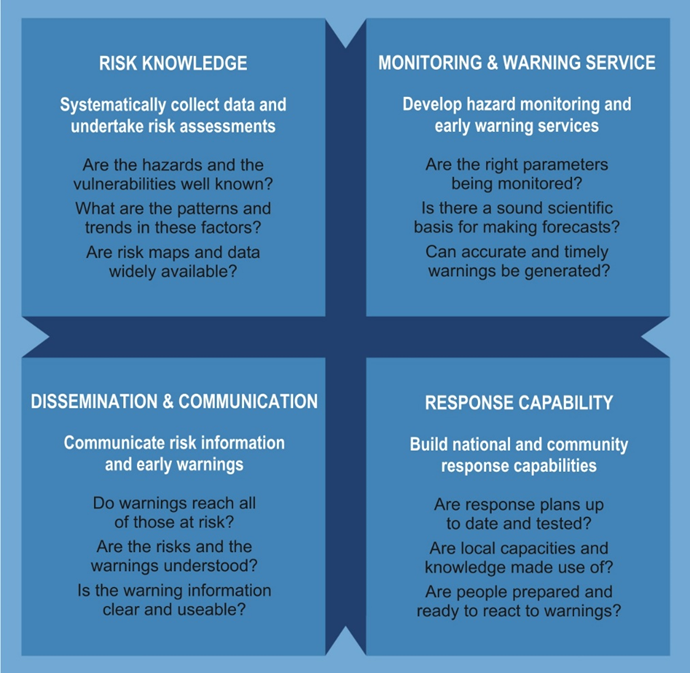
Figure 3.4-1. Four levels of early warning system: UNDRR
Road networks are very important social infrastructure for economic, social, environmental and security reasons. However, the frequent and severe flooding associated with recent extreme weather events has had a significant impact on the transportation system and its users. Many lives have been lost when cars are swept away by flood waters and drivers are unable to escape from their vehicles in time. In addition, it sometimes leads to massive blockage of roads. Thus, flooding is one of the most important threats to road management.
Figures 3.4.1.1 1, 3.4.1.2 2, 3.4.1.3 3 and 3.4.1.4 4 show examples of damage to roads caused by floods. Flooding in creeks and depressions, flooding caused by sediment runoff along with stream water, and flooding of underpasses due to the construction of multi-level roads in cities are all common. The problem of scouring due to flooding is a long-standing effect of flooding.
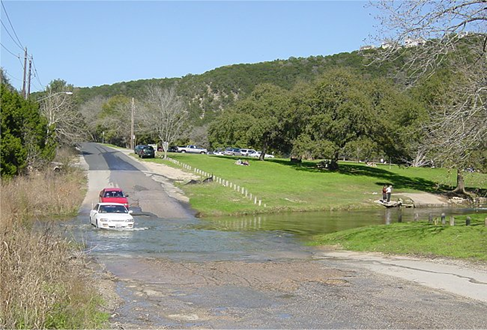
Figure 3.4.1.1. Water Flood in Texas, USA
In many countries, flood and flash flood warnings are issued when weather conditions are expected to bring very heavy rainfall that may cause flooding or flash floods. Similar weather warning information systems are in place in the United States, Europe, Australia, Japan, and other countries. A flash flood warning means that weather conditions indicate a significant and high probability of flooding risk. A flood warning means that there is a high probability that local waterways will soon be flooded.
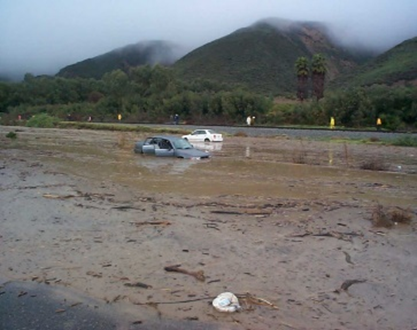
Figure 3.4.1.2. Mud flow flood in California, USA
In the United States, flash flood warnings and flood watches are in place. In Canada, a heavy rainfall warning, which indicates that rainfall is expected that may cause flooding, is essentially the same thing as a flood warning. In Australia, flood warnings issued by the Bureau of Meteorology cover similar conditions to flood warnings in the United States. In Europe, there is the European Flood Warning System. In Japan, there is a warning system that includes special alert information.
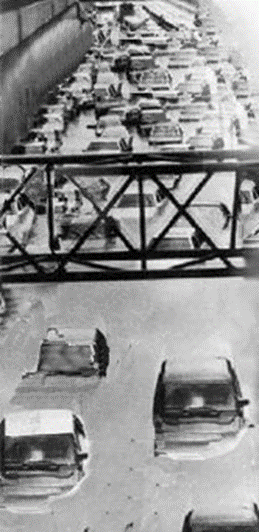
Figure 3.4.1.3. Flooding of autoroute Décarie – Torrential rain in Montréal (July 14, 1987)
It is difficult to estimate the depth of water on flooded roads, and this has led to many accidents where cars enter flooded roads and get stuck. In addition to such direct damage, indirect damage such as economic loss due to detours along flooded roads has also occurred.
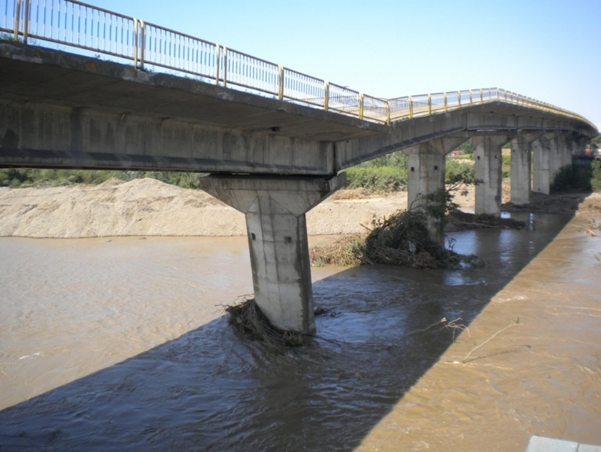
Figure 3.4.1.4. Bridge scouring - High Floods on Dornesti Bridge, Suceava, Romania
In the case of roads, together with weather warning information, the emphasis is not on predicting the occurrence of floods themselves, but on quickly informing drivers of the effects of flooding on roads. For example, in the event of flooding or flooding, efforts are being made to inform drivers of the effects of the flooding as soon as possible to prevent secondary disasters from occurring.
Figure 3.4.1.5 5 shows a warning system that informs road users in advance of flooding. Figure 3.4.1.6 6 shows an example of the installation of road surface markings to warn road users of flooding in urban underpasses. Figure 3.4.1.6 shows an example of the installation of a VMS for warning information. Furthermore, Figure 3.4.1.7 7 shows an example of a real-time flood warning tool to inform drivers of high-risk flood areas during severe storms. The Houston Transtar website and traffic map had over 3 million visitors during 2017 Hurricane Harvy and provided information to travelers when deciding on a route through the Houston area 8.
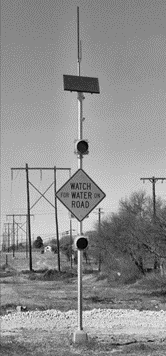
Figure 3.4.1.5. Advance Flood Warning System
The development of a flood warning system is now underway to enable proactive monitoring, assessment and response to flood-related disasters and associated hazards in real time. If the impact of flooding on roads can be predicted in advance, limited resources can be prioritized to close roads, detours can be planned, the public can be informed before motorists are exposed to flood hazards, and travelers can avoid delays and demands on road capacity during the worst times. These active approaches will be presented in the case studies.
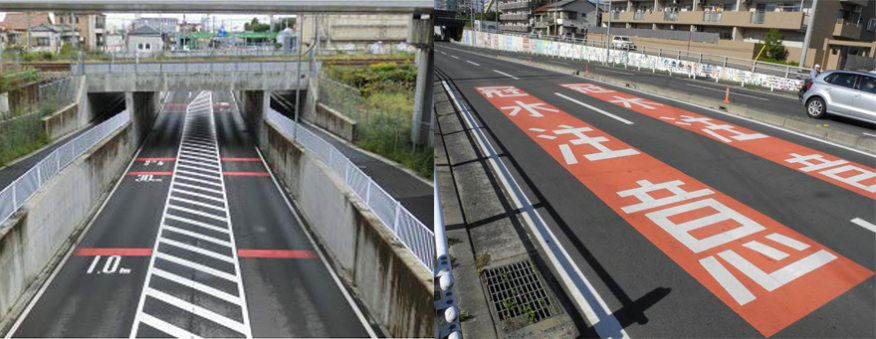
Figure 3.4.1.6. Flood and flood depth sign for underpass road
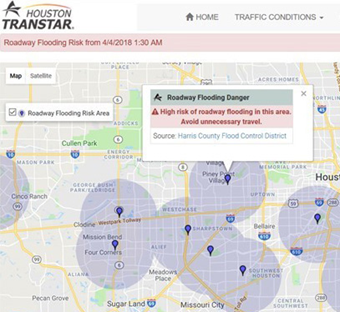
Figure 3.4.1.7. Roadway flooding information (Houston TRANSFER)
Dry season will create wild fires and result in devastating damage in some area. The path and expansion of the fire is difficult to predict due to topography and wind direction, which can make it difficult to set up appropriate road closures and detours. Figure 3.4.2 1 shows the closed road by wild fire. If it is possible to predict the likelihood of a fire and the path and expansion of the fire, it will be easier to ensure the safety of site workers and road users, to procure materials to minimize the impact on the road, and to implement temporary road closures. The such fire warning system is going to be developed.
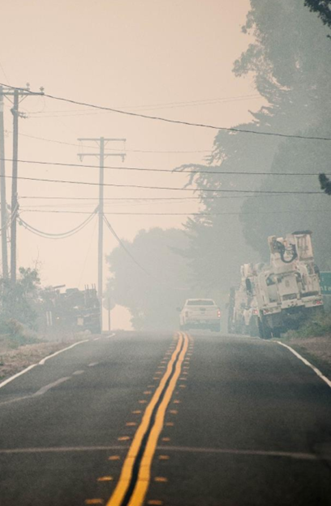
Figure 3.4.2. Road ways closed by wild fire
An earthquake early warning system is "to quickly analyze the distribution of seismic source elements and seismic motions after an earthquake has occurred, and to convey this information to road users for use in road disaster prevention.
There are two main types of systems: early warning systems, which aim to predict the magnitude of shaking before the main motion of an earthquake and prepare for it, and early earthquake damage estimation systems, which predict the extent of damage based on the intensity of the shaking.
In the early warning system, the location of the epicenter and the scale of the earthquake are estimated immediately after the occurrence of the earthquake by analyzing the seismic wave data captured by seismographs at observation points close to the epicenter. The system is designed to help mitigate earthquake disasters by providing information on the seismic intensity as soon as possible. For earthquakes with distant epicenters (trench earthquakes, etc.), a certain amount of grace time can be expected in principle. On the other hand, for earthquakes with close epicenters (e.g., direct-type earthquakes), a grace period may not be expected near the epicenter. Since the development of a wide-area observation network is a prerequisite, national meteorological agencies and similar organizations are developing early warning information. In the road sector, there have been no cases where early warning systems have been developed independently. Many road managers use the early warning earthquake information provided by national meteorological forecasting organizations for their road operations.
The early earthquake damage estimation system uses seismic wave data recorded by seismographs placed at the site immediately after the occurrence of an earthquake and data on the ground and structures prepared in advance to estimate the extent and scale of damage to the roads. By estimating the degree and extent of damage, the system supports the prioritization of emergency activities. Many road managers have adopted the early earthquake damage estimation system. This system can also perform damage simulation by using scenario seismic waves. The results of the simulations can be used to develop a rational disaster prevention plan.
Figure 3.4.3 1 shows the image of the mechanism of the earthquake early warning system.
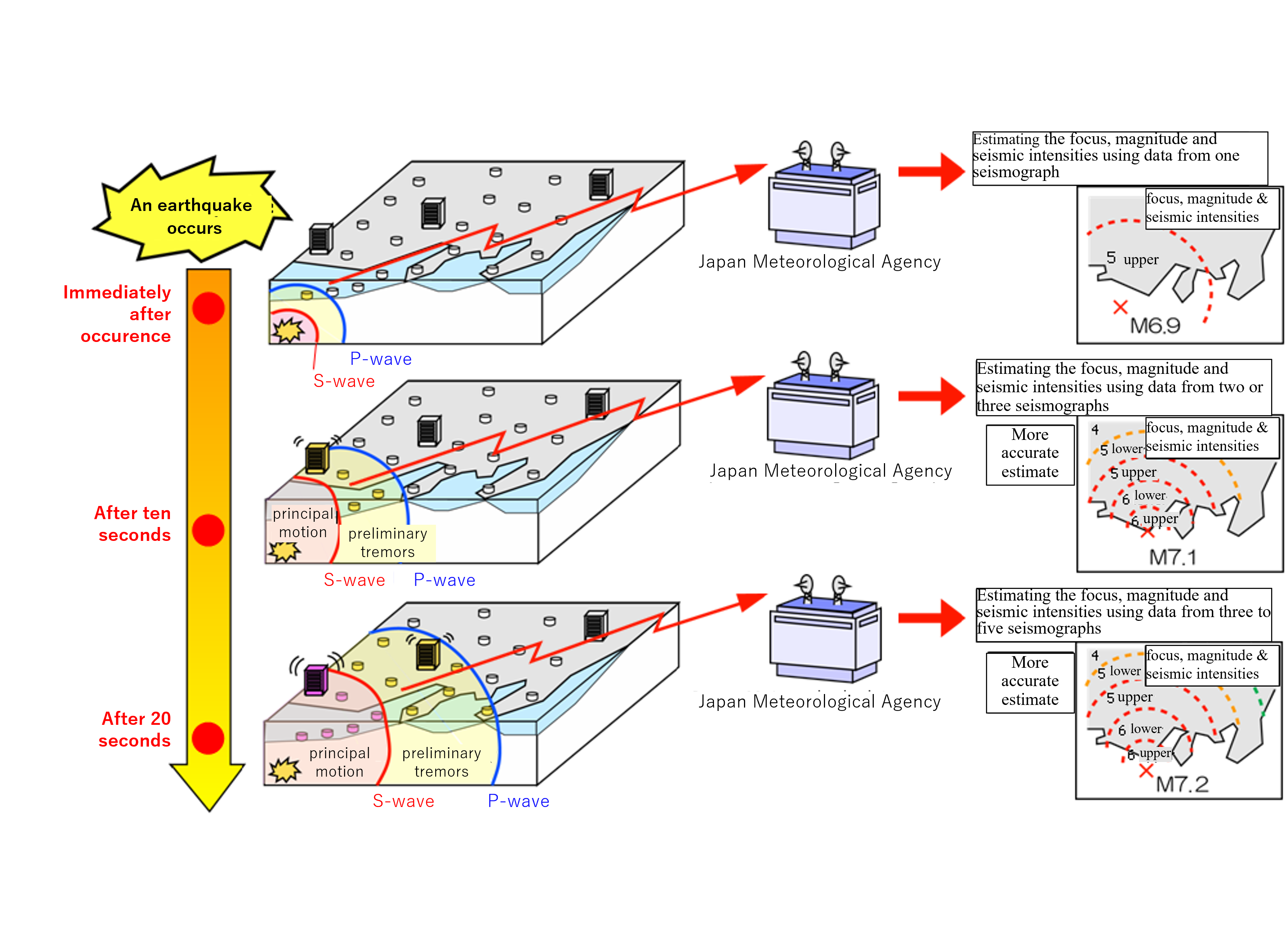
Figure 3.4.3 Mechanism of the earthquake early warning system
Road traffic closure and control have a great impact on local life and economic activities. Therefore, ensuring the functioning of roads is an important mission of road administrators. On the other hand, it is also an important mission of road managers to secure road safety and road users by controlling or closing the road traffic when there is a concern about safe road use such as during adverse weather conditions. In recent years, due in part to the effects of climate change, there has been an increase in localized and concentrated heavy rainfall in short periods. One of the important issues for road administrators is to prevent road users from being involved in landslides and other accidents caused by such extreme weather, especially during extreme torrential downpours. According to this background, it has been widely considered to restrict the use of roads in advance in order to ensure the safety of road and road users.
In Japan, based on the above concept, since 1969, pre-event road closures and traffic control systems have been implemented by designating areas where damage may occur or is likely to occur in the event of adverse weather conditions. When the threshold of extraordinary weather conditions is exceeded, road administrators close the road or control the traffic in order to ensure the safety of road and road users 1. In this section, an overview of Japan's pre-event road closures and traffic control system for heavy rainfall is introduced.
In Japan, the designation of pre-event traffic control and closure sections began in the late 1970s. In 1977, the peak year, 224 sections of 1,379 km were designated. As of April 2015, 980 km of 175 sections have been designated as pre-event traffic control and closure sections.
On the other hand, rainfall is becoming more localized and concentrated, according to the fact that the amount of rainfall exceeding 50 mm per hour, which is known as short-time torrential downpours, has increased 1.4 times in the last 30 years as shown in Figure 3.4.4.1. As a result of these changes in the weather, there has been an increase in the number of disasters such as landslides caused by sudden heavy rainfall and road closures, which have not been seen in the past. Therefore, it is necessary to improve the thresholds for pre-event traffic control and closure sections to cope with short-term torrential downpours 2.
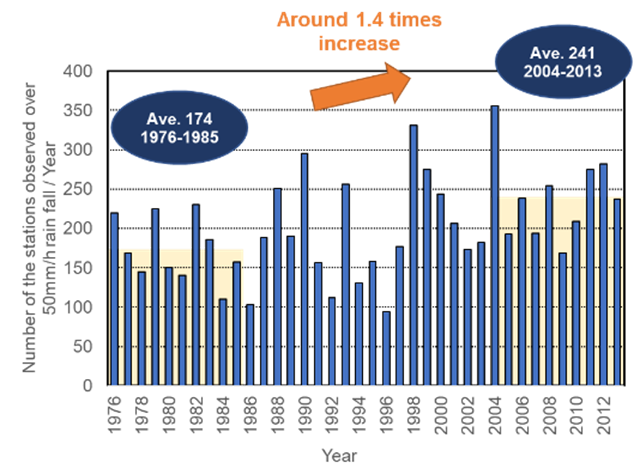
Figure 3.4.4.1. Annual trend of hourly precipitation in Japan
Figure 3.4.4.1 shows the annual number of occurrences of hourly precipitation of 50 mm/h or more in Japan (per 1000 observation points) 3.
The following two methods are used to set the threshold for pre-event road closure and traffic control against heavy rainfall.
A road closure is imposed when the accumulated rainfall exceeds a threshold value. If there is no rainfall or very little rainfall (e.g., less than 2 mm per hour) for a certain period of time (often 3 hours), the accumulated rainfall is reset to zero. Figure 3.4.4.2 shows the schematic image of the cumulative rainfall method 5.
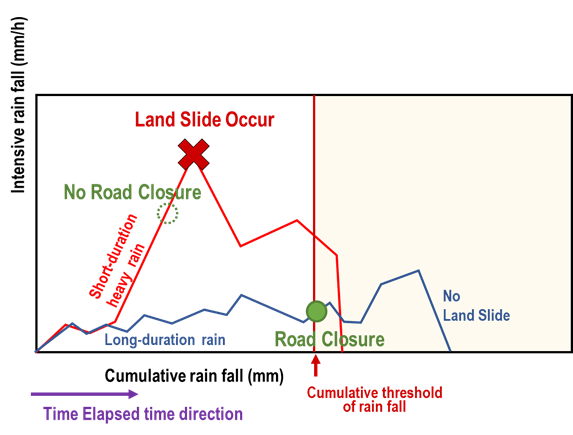
Figure 3.4.4.2 Current road closure threshold- Schematic image of the cumulative rain fall method
Since this is a relatively simple regulation based only on the cumulative rainfall, it is easy to predict the beginning time of the road closure, and it is relatively easy to deploy personnel and equipment for the road closure. On the other hand, since rainfall intensity cannot be reflected in the criteria, it is difficult to deal with disasters caused by localized or concentrated heavy rainfall in a short period of time.
The combination of cumulative rainfall and intensity of rainfall is used to deal with localized and concentrated heavy rainfall in a short period of time, which is difficult to deal with by the cumulative rainfall method, by setting the hourly rainfall as a reference value. Figure 3.4.4.3 shows the schematic image of the combination method of cumulative rainfall and intensity of rainfall 5.
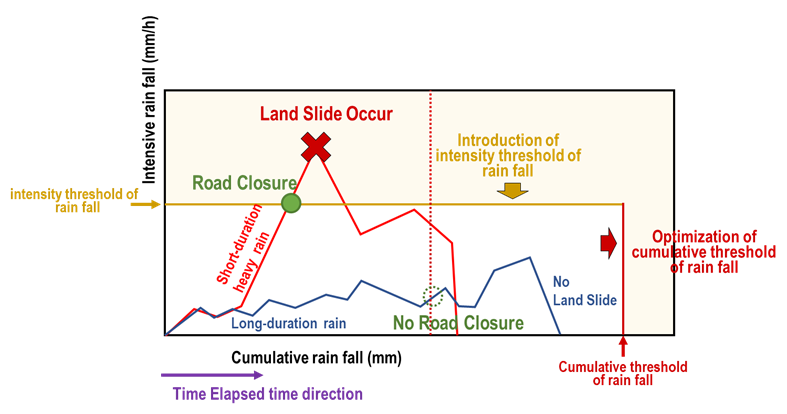
Figure 3.4.4.3 Proposed road closure threshold
The reference value is initially set by calculating the probability of rainfall based on 20 years of rainfall data and then adjusted (up or down) to the appropriate value based on the relationship between the experienced rainfall and the occurrence of disasters.
In this way, it is possible to set a standard value that corresponds to localized and concentrated heavy rainfall in a short period of time. On the other hand, in order to operate the system properly, it is necessary to have a sufficient observation system in place, including personnel and equipment, to immediately control the traffic.
In Japan, the cumulative rainfall method has been used for national and local roads, and the combined cumulative rainfall and intensity of rainfall method has been used for expressways.
The latter method, which incorporates hourly rainfall as an indicator, could be an effective means of dealing with disasters associated with localized torrential downpours. According to the investigation on the effect of this method on the national and local road, it was found that the disaster capture rate would be improved by 20% and the wrong capture rate would be reduced by 20-30%. Therefore, the implementation of the advanced traffic control system using this method is progressing 4.
In order to implement pre-event road closure or traffic control, it is necessary to have on-site personnel to actually implement the closure, which has been one of the issues. When implementing traffic control in advance of a disaster, accident, etc., or due to extreme rainfall, there is an increasing number of cases where automatic (remote-controlled) road closure measure is implemented by remote control while checking safety using CCTV cameras, etc. Currently, the system is used as a supplementary measure until the designated personnel arrives at the site, but further studies are being conducted based on the characteristics of the system that allows for quick implementation of road closure measures 2. Figure 3.4.4.4 4 shows the sequence of the road closure operation using automatic road closure measures 7.

Figure 3.4.4.4 Sequence of the automatic road closure operation
In recent years, in addition to the concept of "pre-event road closure or traffic control," the system of "advance notice road closure or traffic control" is also under consideration. In Japan, railroad sector, when a typhoon is approaching and other factors are expected to affect train operations, advanced noticed suspensions have been implemented since 2014 in order to ensure passenger safety from disasters and prevent confusion 8, 9. In the case of a typhoon in 2018, some expressways were closed with advance notice 10.
1 2014, Norio MAKI, Crisis Response System in times of disaster-Learn from the US experiences, The review of comparative social security research No.188, Autumn [In Japanese]
2 https://www.undrr.org/terminology/early-warning-system
3 2003, the 2nd International Early Warning Conference, "Conference Statement Second international Conference Early Warning II" https://www.unisdr.org/2006/ppew/info-resources/ewc2/upload/downloads/Conference_Statement.pdf
4 https://un-spider.org/risks-and-disasters/early-warning-systems
1 https://tti.tamu.edu/news/tti-houston-transtar-win-awards-for-roadway-flood-warning-system/
2 http://www.texasfreeway.com/Austin/photos/360/360.shtml
3 2017, PIARC TC E.3, Hazard Mapping and Resilience, Proceedings of the international workshop of resilience process for disaster, Santiago, Chile, June
4 2012, PIARC TC C.3, Managing risk in road organization, 2012R13EN
5 2016, PIARC TC 1.5, Risk management for emergency situations Appendix A: Case studies, 2016R26EN
6 2011, Texas transportation institute, Signing strategies for low-water and flood-prone highway crossing, pp07 February
7 2019, Ministry of internal affairs and communications, Investigation on measures to prevent accidents at flooded road, March (In Japanese), https://www.soumu.go.jp/main_content/000541040.pdf
8 https://www.houstontranstar.org/about_transtar/about_rfws.aspx
1 https://ctssr.transportation.org/wp-content/uploads/sites/54/2018/08/california718.lgp_.pdf
1 https://www.jma.go.jp/jma/en/Activities/eew1.html
1 1997, Masahide ITOH, Pre-event road traffic control, Journal of Japan Society of Erosion Control, Volume 50 (1997-1998) Issue 2, July (In Japanese), https://www.jstage.jst.go.jp/article/sabo1973/50/2/50_2_42/_pdf
2 2015, Road Emergency Management Office, Pilot trial of a new pre-event road closure or traffic control for torrential downpours, Road administration seminar, August (In Japanese) https://www.hido.or.jp/14gyousei_backnumber/2015data/1508/1508gerira_gouu_mlit.pdf
3 2015, Road Emergency Management Office, Pilot trial of a new pre-event road closure or traffic control for torrential downpours, Road administration seminar, August (translated from Japanese into English), https://www.hido.or.jp/14gyousei_backnumber/2015data/1508/1508gerira_gouu_mlit.pdf
4 2015, Road Emergency Management Office, Pilot trial of a new pre-event road closure or traffic control for torrential downpours, Road administration seminar, August (In Japanese), https://www.hido.or.jp/14gyousei_backnumber/2015data/1508/1508gerira_gouu_mlit.pdf
52015, Road Emergency Management Office, Pilot trial of a new pre-event road closure or traffic control for torrential downpours, Road administration seminar, August (translated from Japanese into English), https://www.hido.or.jp/14gyousei_backnumber/2015data/1508/1508gerira_gouu_mlit.pdf
6 2015, Road Emergency Management Office, Pilot trial of a new pre-event road closure or traffic control for torrential downpours, Road administration seminar, August (In Japanese), https://www.hido.or.jp/14gyousei_backnumber/2015data/1508/1508gerira_gouu_mlit.pdf
7 2015, Road Emergency Management Office, Pilot trial of a new pre-event road closure or traffic control for torrential downpours, Road administration seminar, August (translated from Japanese into English), https://www.hido.or.jp/14gyousei_backnumber/2015data/1508/1508gerira_gouu_mlit.pdf
8 2015, Road Emergency Management Office, Pilot trial of a new pre-event road closure or traffic control for torrential downpours, Road administration seminar, August (In Japanese), https://www.hido.or.jp/14gyousei_backnumber/2015data/1508/1508gerira_gouu_mlit.pdf
9 2015, Road Emergency Management Office, Pilot trial of a new pre-event road closure or traffic control for torrential downpours, Road administration seminar, August (In Japanese) https://www.hido.or.jp/14gyousei_backnumber/2015data/1508/1508gerira_gouu_mlit.pdf
10 2015, Road Emergency Management Office, Pilot trial of a new pre-event road closure or traffic control for torrential downpours, Road administration seminar, August (In Japanese) https://www.hido.or.jp/14gyousei_backnumber/2015data/1508/1508gerira_gouu_mlit.pdf
11 2015, Road Emergency Management Office, Pilot trial of a new pre-event road closure or traffic control for torrential downpours, Road administration seminar, August (In Japanese), https://www.hido.or.jp/14gyousei_backnumber/2015data/1508/1508gerira_gouu_mlit.pdf
12 Wikipedia, 2014 Typhoon Vongfong (In Japanese) (Visit on March 1st, 2021)
13 2019, Ministry of Land, Infrastructure, Transport, and Tourism, Summary of the implementation of the planned suspension of railroad services with public notice, July (In Japanese) https://www.mlit.go.jp/common/001296916.pdf
14 2019, Takayuki Sugiyama, Information provision and safety assurance measures to expressway customers against extreme weather in Hansin expressway, Proceedings of the international workshop on disaster management and resilience for road infrastructure, May